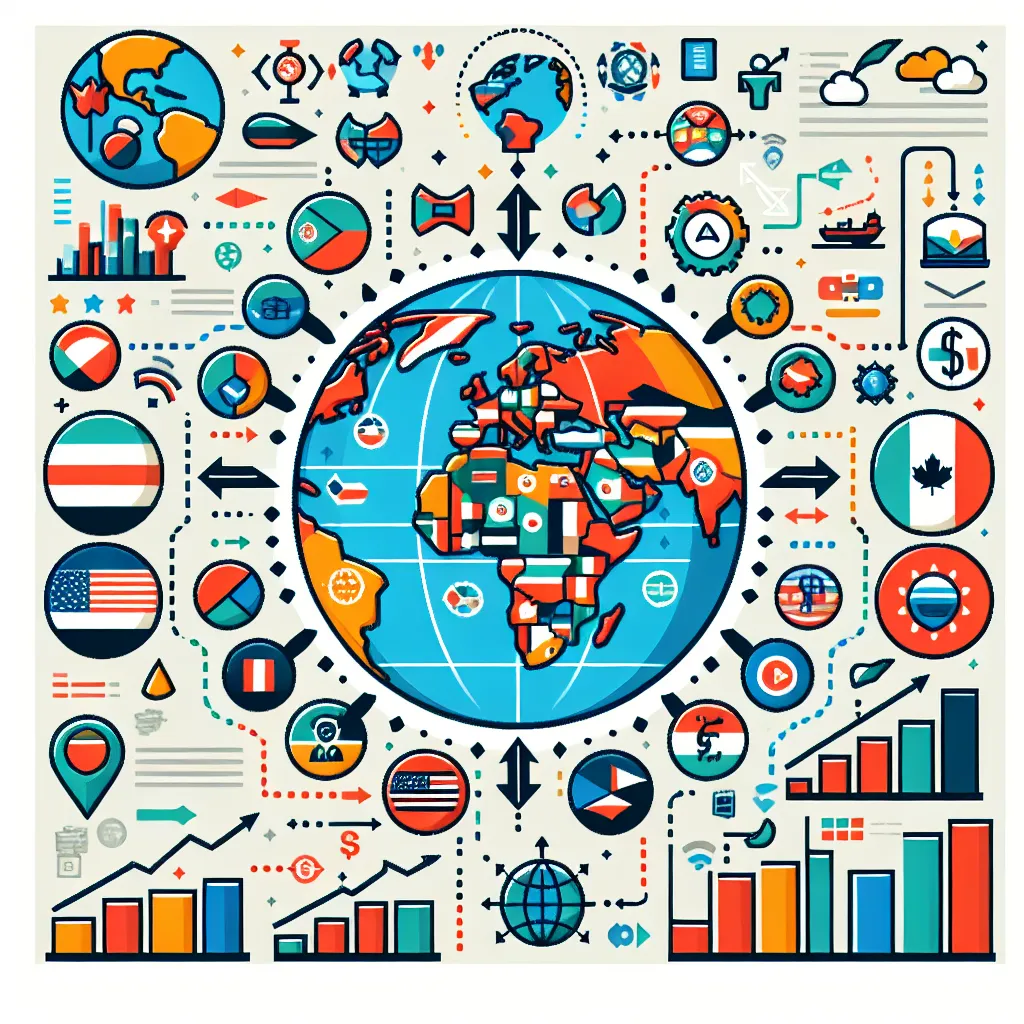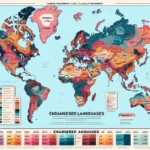The IELTS Reading section challenges test-takers to comprehend complex texts and answer various question types within a tight timeframe. One recurring topic that often appears in IELTS Reading passages is “The effects of international trade agreements.” This subject has been a staple in past exams and, given its ongoing relevance in global economics and politics, is likely to appear in future tests as well.
As an experienced IELTS instructor, I’ve noticed that questions about international trade agreements frequently crop up in the more difficult passages of the Reading test. Understanding this topic can significantly boost your performance in the exam. Let’s dive into a practice passage and questions to help you prepare for this challenging yet important subject.
 International Trade Agreements
International Trade Agreements
Practice Passage: The Global Impact of Trade Agreements
The Effects of International Trade Agreements
International trade agreements have become a cornerstone of the global economy, shaping the way nations interact commercially and influencing economic policies worldwide. These agreements, which can be bilateral between two countries or multilateral involving multiple nations, aim to reduce barriers to trade, such as tariffs, quotas, and subsidies. While proponents argue that such agreements foster economic growth and international cooperation, critics contend that they can lead to job losses in certain sectors and exacerbate income inequality.
One of the most significant effects of international trade agreements is the expansion of market access for participating countries. By reducing or eliminating tariffs and other trade barriers, these agreements allow businesses to reach new consumers and source materials more efficiently. For example, the North American Free Trade Agreement (NAFTA), now replaced by the United States-Mexico-Canada Agreement (USMCA), led to a substantial increase in trade volume between the participating countries. This expanded market access can lead to economies of scale, allowing companies to produce goods more efficiently and at lower costs.
However, the benefits of trade agreements are not evenly distributed. While some industries thrive under increased competition and access to global markets, others may struggle to adapt. In developed countries, manufacturing sectors often face pressure from lower-cost producers abroad, potentially leading to job losses and economic displacement in certain regions. This has led to political backlash against trade agreements in some countries, with critics arguing that the benefits of free trade disproportionately accrue to large corporations and wealthy individuals.
Developing countries, on the other hand, often see trade agreements as a pathway to economic growth and industrialization. By gaining access to larger markets, these countries can attract foreign investment and develop export-oriented industries. This can lead to job creation and technology transfer, helping to boost overall economic development. However, critics argue that trade agreements can also lock developing countries into low-value-added production, making it difficult for them to move up the economic value chain.
Environmental concerns have also become increasingly prominent in discussions about trade agreements. Critics argue that by promoting increased production and transportation of goods, these agreements can contribute to environmental degradation and climate change. In response, more recent trade agreements have begun to incorporate environmental provisions, aiming to ensure that economic growth does not come at the expense of environmental sustainability.
Despite these challenges, international trade agreements continue to play a crucial role in shaping the global economy. As the world becomes increasingly interconnected, the ability to navigate and understand these agreements becomes ever more important for businesses, policymakers, and citizens alike. While debate over their merits continues, it is clear that international trade agreements will remain a key factor in global economic relations for the foreseeable future.
Questions
-
According to the passage, what is one of the main goals of international trade agreements?
A) To increase tariffs between countries
B) To reduce barriers to trade
C) To promote environmental sustainability
D) To create job losses in certain sectors -
The passage suggests that the benefits of trade agreements are:
A) Equally distributed among all participating countries
B) Mostly beneficial for developing countries
C) Not evenly distributed among different sectors and groups
D) Always detrimental to manufacturing sectors in developed countries -
Which of the following is mentioned as a potential benefit of trade agreements for developing countries?
A) Protection of local industries from foreign competition
B) Attraction of foreign investment
C) Guaranteed high-value production
D) Reduction in technology transfer -
According to the passage, how have recent trade agreements addressed environmental concerns?
A) By prohibiting all environmentally harmful production
B) By ignoring environmental issues completely
C) By incorporating environmental provisions
D) By focusing solely on economic growth -
The passage indicates that the debate over trade agreements is:
A) Settled, with all parties agreeing on their benefits
B) Ongoing, with arguments for and against their effects
C) No longer relevant in the global economy
D) Focused only on their environmental impact -
Which of the following statements best reflects the author’s view on the future of international trade agreements?
A) They will become less important in global economic relations
B) They will be abandoned due to their negative effects
C) They will remain a key factor in global economic relations
D) They will only benefit large corporations in the future -
The passage mentions NAFTA as an example of:
A) A failed trade agreement
B) An agreement that increased trade volume between participants
C) An agreement focused solely on environmental protection
D) A bilateral agreement between two countries -
According to the text, what is one criticism of trade agreements in relation to developing countries?
A) They prevent foreign investment
B) They lead to immediate deindustrialization
C) They can lock countries into low-value-added production
D) They always result in rapid economic growth
Answer Key and Explanations
-
B) To reduce barriers to trade
Explanation: The passage states that trade agreements “aim to reduce barriers to trade, such as tariffs, quotas, and subsidies.” -
C) Not evenly distributed among different sectors and groups
Explanation: The text mentions that “the benefits of trade agreements are not evenly distributed” and gives examples of how different sectors and groups may be affected differently. -
B) Attraction of foreign investment
Explanation: The passage notes that for developing countries, trade agreements can “attract foreign investment and develop export-oriented industries.” -
C) By incorporating environmental provisions
Explanation: The text states that “more recent trade agreements have begun to incorporate environmental provisions.” -
B) Ongoing, with arguments for and against their effects
Explanation: The passage presents various viewpoints and concludes that “debate over their merits continues.” -
C) They will remain a key factor in global economic relations
Explanation: The final paragraph states that “it is clear that international trade agreements will remain a key factor in global economic relations for the foreseeable future.” -
B) An agreement that increased trade volume between participants
Explanation: The passage mentions NAFTA as an example that “led to a substantial increase in trade volume between the participating countries.” -
C) They can lock countries into low-value-added production
Explanation: The text states that critics argue trade agreements “can also lock developing countries into low-value-added production.”
Common Mistakes to Avoid
-
Misinterpreting the main idea: Always read the entire passage before answering questions to avoid jumping to conclusions based on partial information.
-
Overlooking specific details: Pay close attention to qualifiers like “some,” “often,” or “can,” which indicate nuanced statements rather than absolute claims.
-
Falling for distractors: Be cautious of answer options that sound plausible but are not supported by the text.
-
Ignoring the author’s tone: Notice whether the author presents a balanced view or leans towards a particular perspective.
-
Time management: Don’t spend too much time on one question or passage. If unsure, make an educated guess and move on.
Key Vocabulary
- Bilateral: involving two parties or countries
- Multilateral: involving more than two countries or parties
- Tariffs: taxes on imported goods
- Subsidies: financial aid provided by a government to a specific industry
- Economies of scale: cost advantages that enterprises obtain due to their scale of operation
- Economic displacement: the loss of jobs or economic opportunities in a particular sector or region
- Foreign investment: the flow of capital from one country to another
- Technology transfer: the process of sharing skills, knowledge, technologies, and methods between organizations
Grammar Focus
Pay attention to complex sentence structures often used in academic texts:
- Conditional sentences: “While some industries thrive under increased competition, others may struggle to adapt.”
- Contrast structures: “However, the benefits of trade agreements are not evenly distributed.”
- Cause and effect: “By reducing or eliminating tariffs and other trade barriers, these agreements allow businesses to reach new consumers.”
Tips for Success
-
Practice with timed reading exercises to improve your speed and comprehension.
-
Familiarize yourself with economic and political terminology related to international trade.
-
Develop skimming and scanning techniques to quickly locate relevant information in the text.
-
Pay attention to topic sentences and concluding sentences in each paragraph to grasp the main ideas quickly.
-
Regularly read articles on international trade and economics from reputable sources to build your background knowledge.
-
When answering questions, always refer back to the text and avoid relying solely on your prior knowledge of the subject.
By mastering these skills and understanding complex topics like the effects of international trade agreements, you’ll be well-prepared for the IELTS Reading test. Remember, practice and persistence are key to achieving a high score in this challenging section of the exam.
For more information on related topics, you might find these articles helpful:
- Effects of international trade agreements on developing countries
- How international trade agreements affect global economics
- Effects of global trade on environmental sustainability
Good luck with your IELTS preparation!


